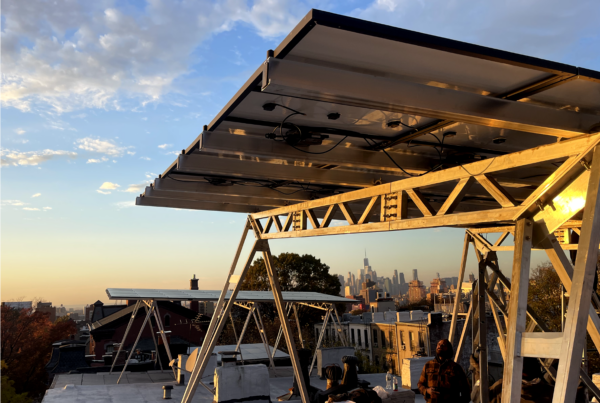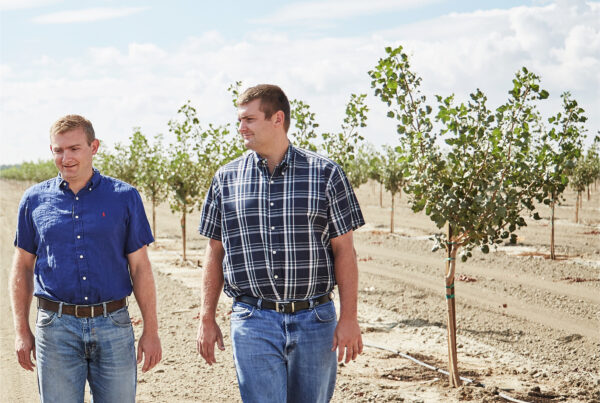Sustainable PR client Glens Falls Agricultural Pilot was recently featured by ABC News 10 for their vertical farm installation in Glens Falls, New York:
GLENS FALLS, N.Y. (NEWS10) — You don’t have to drive too far in the right direction to spot a traditional farm. Although harder to see in the middle of winter, the North Country has its fair share of cattle and cornfields. One place that hasn’t been a home to farming, though, is downtown Glens Falls. But that’s all about to change.
22 Ridge Street, part of Glens Falls’ downtown and home to the [farmacy] restobar restaurant, has empty space on its upper floors. It’s the kind of space that’s sat disused for years or more; and just the kind that Economic Development Director Jeff Flagg was looking for when starting a project to bring hydroponic “vertical farming” to the city.
“The idea was that, while COVID shut everything down, you could repurpose this kind place into a little farm,” said Flagg on Monday, speaking about steps in the planning process that took place around the outset of the COVID pandemic. “Then, if a couple years later the owner came along and wanted to use that space or rent it, you could dismantle the whole thing and build it somewhere else.”
The third floor of 22 Ridge St. is set to become the home of the first-ever Glens Falls Urban Agriculture Pilot. The goal is to build an indoor farm there, to grow things like fresh basil, lettuce, and fruits, that would go to nearby restaurants and markets, keeping the food stream local. The pilot program is being fueled by a nearly $100K Smart Cities Innovation Partnership grant that the city applied for in early 2020.
One restaurant that could benefit from the project is its downstairs neighbor at [farmacy] restobar. Any number of other downtown restaurants could see the benefit, too. Flagg says the vertical farm idea would solve the “last-mile problem,” a common issue in getting quality produce to the customers who need it.
“We can get things (to town), but the issue is getting things from a local, centralized warehouse to that last location,” Flagg said. “What we’re trying to target is local restaurants, and preferably things they cannot easily get. A lot of places are saying, ‘I can’t get this stuff for any amount of money.’”
If a restaurant needs a reliable source for fresh basil—Flagg’s example—the vertical farm would help them get it without any risk factors associated with transport time, weather hazards or any other factors that can get in the way of an already-rattled supply chain. The only limits would be those of the operation’s size.
Tools of the trade
At the outset this spring, that size will consist of 300 square feet, split into two mobile shelving units. Each layer of shelving carries trays of water, 2 to 4 inches deep, which the growing produce will be submerged into in order to grow. Energy-efficient equipment circulates air and controls humidity.
That’s a space where the city is getting some help. Glens Falls has partnered on the vertical farming project with Re-Nuble, a New York City-based renewability and sustainability firm for whom the Glens Falls vertical farm is as new as it is for the city itself.
“We hadn’t partnered on a pilot program before, per se,” said Tinia Pina, Re-Nuble founder. “Some of the farms we work with are commercial operators, but this allows us to have a pilot farm that we can kind of build in public, and be transparent with a lot of the research that goes into what we do. We haven’t really seen research to date investing in how to make food waste a comparable input for these farms.”
While Glens Falls’ focus is on giving urban farming a home, Re-Nuble’s goal is to give the city energy-efficient and sustainable tools to do it with. The group encourages the reduction of food waste by turning that waste into compost and biodegradable substances. They’ve also helped select energy-efficient equipment, part of an agreement with the project’s other collaborator; National Grid.
“We’re trying to create a model that isn’t limiting these types of farms to one in which there’s a nearby geothermal source of energy, or hydropower,” Pina said. “Giving that prioritization earlier allows us to know what the true level of energy efficiency is.”
As Pina says, Glens Falls is becoming a model. The 300-square-foot pilot program will run for a full year, and the results coming out of it can be recalculated for what a hydroponic farm of the same design could do with an acre (44,000 sqf.) of space. That model would be one other urban farms could use, and also one that could be employed by more traditional farms, like the ones out in Washington County.
Speaking of those farms, there’s one message Pina and Flagg both want to get out there. This project isn’t intended to replace or lessen what New York farms provide. Instead, the program will supplement the existing food stream, and provide tools that those traditional farmers can use if they want to expand their own horizons.
“A lot of these farms are very energy-intensive,” said Pina. “60-to-70% of their costs are just energy costs. In New York, for a lot of crops there’s a 6-month growing window.”
The Glens Falls model would give farmers the option of supplementing their work with year-round crops grown in hydroponic settings, using one bit of data that’s been in short supply: scaling. Pina said that many farmers who try vertical or hydroponic growing options spend money on large spaces to do it, which can put them at a financial disadvantage from the start.
“We’re just trying to give them some more opportunity. Or some more inspiration, at least,” Pina said.
On your marks, get set, grow
The pilot period’s ultimate goal is to show whether urban farming is economically viable in Glens Falls. Launch day on the third floor of the Ridge Street building will be sometime in late March or early April, according to Pina. Flagg estimates that it could take until the summer to have produce actively growing inside.
One question on Flagg’s mind is how to define “local.” If the vertical farm is there to help get produce that last step to restaurants that otherwise couldn’t get it, is the best option to only let Glens Falls businesses have access to it? Or should neighbors like Queensbury and Lake George be able to benefit as well?
“It depends,” Flagg said, “one, on how big a facility you’re going to build; and two, how practically do you want to deliver and still call yourself hyper-local?”
Although it certainly works, 22 Ridge St. isn’t perfect. No place would be; that’s part of the point. Pina pointed out that if the ceiling in the third-floor space were a bit higher, the two sets of growing racks could have fit an additional shelf each. In the future, Flagg likes the idea of expanding, whether to another floor of the building or to another disused Glens Falls structure.
“One issue (with the Ridge Street space) is that it’s a third-floor walkup,” Flagg said. “There’s no elevator in the building. That, by its very nature, makes it not perfect.”
It wasn’t the first time Flagg and the city had talked about embarking on an urban agriculture program, and 22 Ridge St. wasn’t the first location the city had considered. That honor goes to an old former blacksmith shop at 56 Glen Street, which was also recently considered for a potential cannabis dispensary by a local businessman. Another candidate the Incubator building on South Street, which is currently set to be used as part of the South Street Marketplace project.
Once the year-long pilot is over, Flagg doesn’t completely know who will run the vertical farm. The magic of it is that whether it’s on Ridge, Glen or South Street, there are buildings virtually anywhere that can house a project like this. And that’s true wherever you go.
“I don’t know if you’d want another one here. The idea is that if you could do it here, why can’t you do it in Plattsburgh? Why can’t you do it in Schohaire? Why can’t you do it in Saranac Lake, or Tupper Lake, or Utica, or wherever? All of these places in the North Country have un- or underutilized spaces that can be repurposed for something like this.”
The article was originally published by ABC News 10 on January 24, 2022.





